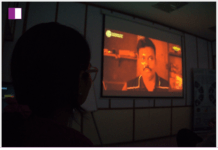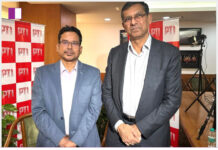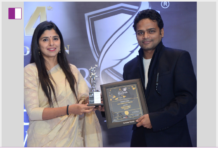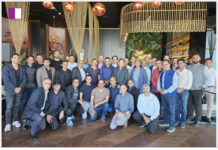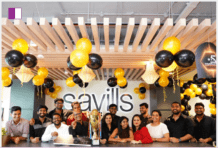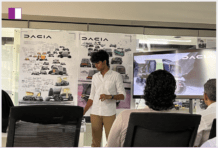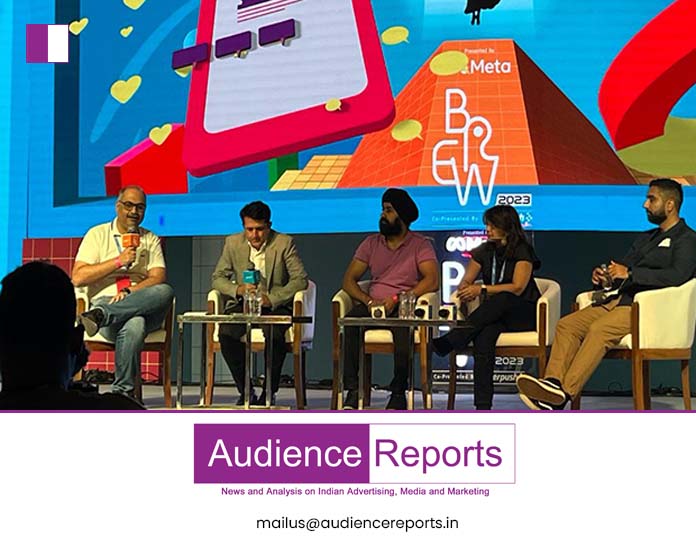During GroupM’s Brew 2023 event, industry leaders talk about why it’s important for marketers and brands to think about the potential problems that can come with using AI. They also discuss how brands are using this advancing technology to make their advertising campaigns more successful, and much more.
GroupM Brew Generative AI has garnered significant attention in recent times, offering numerous opportunities for brands and marketers to streamline their operations. Industry leaders are now pondering how marketers and brands can harness this technology to its fullest potential while remaining mindful of associated risks.
Furthermore, there is an ongoing exploration of how creativity and AI can be thoughtfully integrated to drive innovation.
A panel at GroupM’s Brew 2023, had leading names from the industry, including Tushar Vyas, President of Growth and Transformation, GroupM, South Asia; Sumeli Chatterjee, Head – Integrated Marketing and Experiences – Coca-Cola Company; Dalbir Singh, VP Global Partnerships – Seedtag; Sidharth Singh, Category Manager – Mondelez International and Amin Lakhani, CEO – South Asia, Mindshare, holding a discussion on “Generative AI and the Future of Creativity – Conversation”.
To begin with the discussion, Vyas highlighted that Coca-Cola is the only company which has a Gen-AI global head.
Further adding to his point, Chatterjee said that they actually have a position as a global head of AI so that there is a focus to not only plan initiatives around AI but also understand it.
“When evaluating our approach to marketing or any campaign, we focus on three key elements: culture, community and commerce. Content plays a central role in this strategy. Culture is shaped by insights, including social and community insights. Community encompasses the media ecosystem and the environment in which conversations unfold. Commerce is our ultimate goal, as it is responsible for sealing the deal at the end of the process,” Chatterjee said.
“AI serves a dual purpose for us. Firstly, it significantly enhances efficiency by augmenting cognitive abilities, leading to faster and more adept task execution. However, its role transcends mere productivity. It is not a question of AI competing with humans, rather, it empowers and, as you aptly mentioned, expansively extends the horizons of human imagination,” she added.
Furthermore, she went on to say that AI is very fascinating and for marketers, AI represents a new and captivating tool. It’s akin to a new toy that everyone wants to explore and employ.
“Nevertheless, we are acutely aware that it’s not solely about reaping the rewards, it’s equally crucial to consider the associated risks and the preparation needed for organisations and teams to effectively utilise AI. This entails a significant focus on machine learning, preparation and planning,” Chatterjee said.
“We aim to enhance our readiness as we embrace AI. It’s important to note that virtually everyone is incorporating AI into their daily lives, including businesses. However, the key objective of this role and individual is to ensure that AI is harnessed in a genuine and effective manner while aligning with the broader vision we are aiming to achieve,” she said.
Singh said, “Everything we do as marketers is aimed at establishing a more profound connection with consumers. Concepts like “tech for culture,” “tech for good,” and “empathy at scale” have all contributed to this purpose, particularly gaining prominence as digital media evolved. These ideas allow us to understand better what consumers truly value.”
He emphasised that everything they have achieved in this field has been shaped by the technology and tools available to us at the time, both enabling and limiting them.
“Now, with the emergence of GenAI, we are making a significant leap forward. The potential is boundless. Regarding understanding consumers, processing data, and delivering large-scale innovative content, the prospects are incredibly promising. We approach this with a great deal of seriousness and enthusiasm, recognising the exciting possibilities for consumers,” Singh said.
“Looking at marketing in 2023 compared to when I started in 2014, the transformation is striking. Cutting-edge and exciting work in marketing has become the norm. The concept of empathy at scale, which once had mixed success, is now poised to become a more integral part of our thinking, driven by rapid technological advancements. This will likely lead to an increase in meaningful work in this area,” he added.
Vyas asked Dalbir how should marketers make a context-aware AI solution and how should they reach out to the right audiences in the right context.
While answering this, Dalbir said, “To begin, we are not reinventing the wheel. Contextual targeting has existed for quite some time, even before we began using cookies for audience targeting. So, Contextual has a history. What’s happening now is more of a reinvention. This is where AI plays a crucial role because we need to move beyond mere keywords. Let me illustrate this with an example. Consider “natural beauty” as an audience segment within the brief. If you were to target it using just one or two keywords, it could refer to both the beauty of nature and beauty products or health articles. This is where AI comes into play, as it looks at various elements on the page, not just keywords. It takes into account image data, natural language processing, semantics, and even sentiment analysis.”
“We should use AI purposefully, not just for simple, empathetic tasks. It’s crucial to use AI effectively and question its real value, especially for brands. We need to challenge media owners to define what AI means to them. For instance, targeting the right mindset is vital. Contextualisation should be accurate to avoid serving ads that don’t align with the context, like a KFC ad in a gym playlist. Contextual advertising maintains brand safety and privacy while future-proofing against changes like the death of third-party cookies. Brands need to consider how to stay privacy-focused and brand-safe. AI can be valuable, but it’s essential to ask the right questions,” he added.
Vyas highlighted that Singh has accomplished a significant amount of AI-driven work within the Indian context. He also asked him what’s the secret sauce for such success and the strategy that unites all the components.
Singh said, “The secret sauce is constantly evolving, so the answer can change over time, even after six months. Our primary focus is on the brand and the consumer. We start by understanding consumer insights, identifying key pain points and finding solutions for them. We also consider the role the brand plays in the consumer’s life. Once these aspects are clear, we incorporate AI or other technologies to enhance the process. It’s essential to prioritise the consumer and brand aspects over technology. Additionally, building an ecosystem that stays informed about the latest trends is crucial for us.”
There are going to be a lot of tests and learning, but we have to be brave enough to invest and sometimes take failure as well, he added.
Meanwhile, Chatterjee said that it would be wonderful if teams across brands focus on AI work and think about it since it’s something new. While the rewards and excitement are appealing, it’s essential for people to understand the hard work involved. AI can be like a mysterious black box, which you can’t easily control or understand.
Lakhani said, “To me what AI has done is to bring back the classical debate which is man over machine and machine over man. This debate about using machines has been around for centuries, and AI has reignited it. Do we have a choice? I don’t think so. Consumers are advancing, and to keep up, we must embrace and learn how to use machines. That’s the key.”
“We are based on the idea of helping our clients succeed in the market. To do that, we need to win over consumers by simplifying the complex ecosystem into an easy decision-making process, using AI. We aim to make this conversation more straightforward, considering our diverse clientele. The entire effort is to move the needle across two places. One is, how is the agency ecosystem adopting the tech landscape, whether we build tech in-house or through partnerships?”
Lakhani emphasised that within WPP, there are a lot of efforts going on in building internal tech capabilities.
Lastly, Vyas asked the panellists what’s the most interesting thing they have noticed in the combination of AI and creativity and what should we look forward to?
While answering this, Dalbir said, “When it comes to AI and what we can expect, training is a big part of it. At Seedtag, we use AI to simplify things and rely on data for everything. We don’t just use AI to create content. We use it to tailor solutions for specific situations. For instance, if an automotive brand wants to reach different types of audiences like businesses, individuals, or families, we adjust the content to fit each context. However, it’s crucial to have a human element to oversee and ensure that the AI behaves correctly.”
Chatterjee said that Gen AI allows brands, creators, and consumers to collaborate better now. This is a great opportunity for everyone to work together with the same values, though there are some risks.
Brands and consumers can both participate and while it might seem like a dream, it’s already happening in some places. This is an exciting space that also encourages brands to learn and grow alongside others, she added.
Dalbir said, “In recent decades, technology has become a big part of our lives, helping with many different things. Now, with AI advancing quickly, I believe everything will get better in the next few years. Also, when different technologies work together, they can solve specific human problems. As technology gets better, it will bring surprises and many possibilities. I am excited about what’s to come.”
Lastly, Lakhani said, “For me, it’s like a cycle with both negative and positive aspects. Around 80% of our intellectual effort goes into repetitive and avoidable tasks. I’m hoping for AI to unlock its potential and reduce this by 80%, giving us more time for creative thinking, personal time, and improving overall engagement in our ecosystem.”








